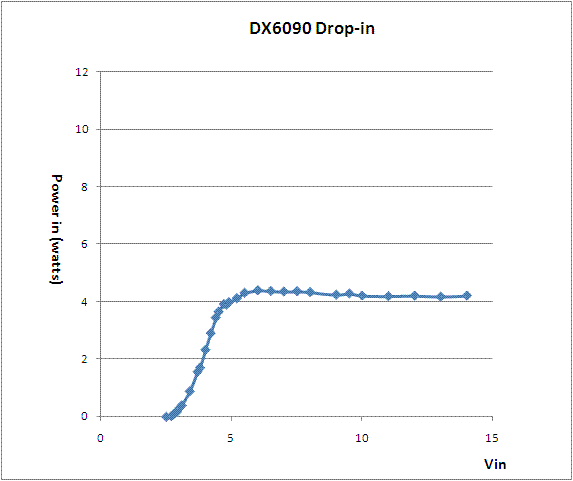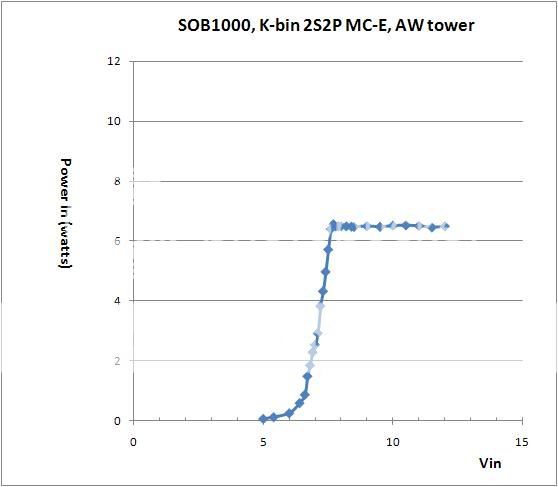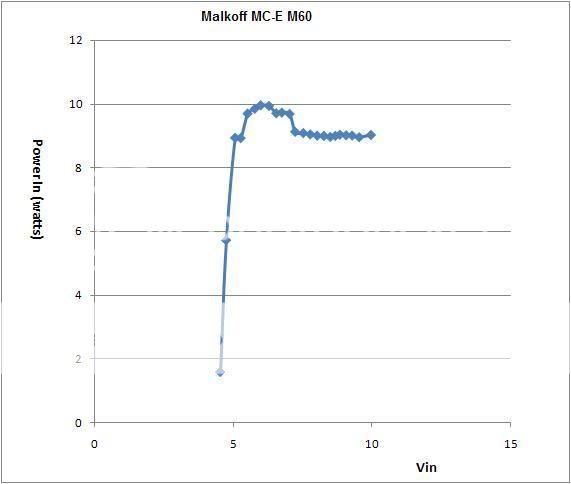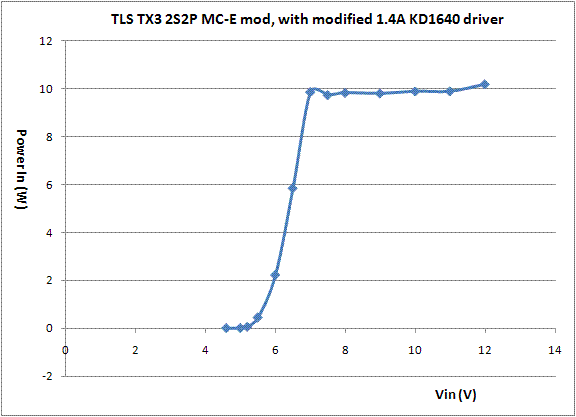Never said the Malkoff's Pin vs Vin profile was "the end of the world". However, an unnecessary extra 1W of draw costs you in excess heat and shorter run time (roughly 10%). I'll take a 10% improvement any day, especially when there are drivers available that can hit that mark.
Regardless of how you want to spin your description of the Malkoff driver's Pin vs Vin curve, it isn't even close to being flat. And it has a higher than desirable (IMO) voltage overhead. As you like to claim with your IS data, "truth is truth".
IMO, the Malkoff driver is still inferior, whether compared to a lower-powered driver or a higher-powered driver. My original point for showing the various graphs was to demonstrate what IMO "good" Pin vs Vin curves look like. "Apples to apples" in terms of matching power draw wasn't my intent nor necessary. Are you suggesting that somehow a higher power draw excuses poorer Pin vs Vin performance? In any case, here is a curve for a TLS TX3 head, which uses a cheap KD buck driver, modified for 1.4A output to a 2S2P MC-E. It has a flatter Pin vs Vin curve compared to the Malkoff, and the TX3's voltage overhead is only about 0.5V, which allows for 2xLi-ion. If the voltage overhead had been the same as with the Malkoff driver, 2xLi-ion would not be a good choice. The same high voltage overhead for the Malkoff makes 1xLi-ion (e.g., an IMR18650) a non-starter as well.
What can I say. For $125 for just the drop-in, I expect "perfection".
Since the Uniq tailcap has a parasitic draw of about 1mA and also has no momentary-on capability, I have little interest in it. Its relatively low amperage rating for the switch also gives me pause. You yourself rated it at 1.5A to 2A max
here (specifically, the Uniq switch "may go pop" at 1.5A, and "don't think it will survive 2 amps at all"), and your data presented by bigchelis above in Post #6 shows that the Malkoff can draw ~1.7A. Call me cautious, but that does not look like a safe current draw relative to the rated amperage for the switch.





